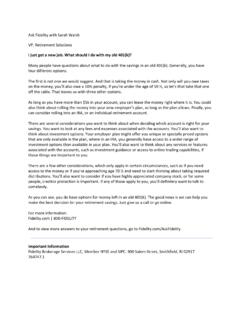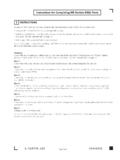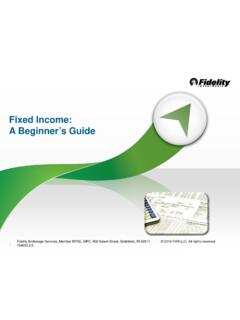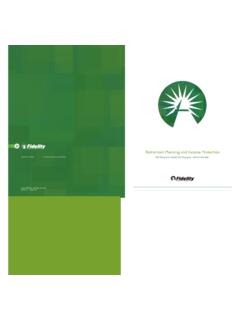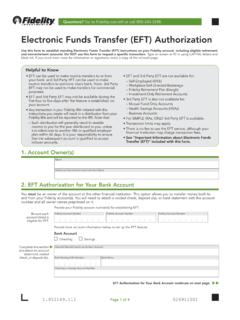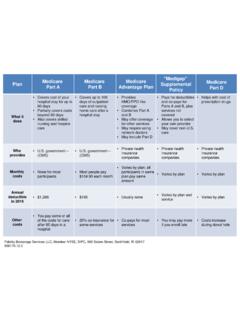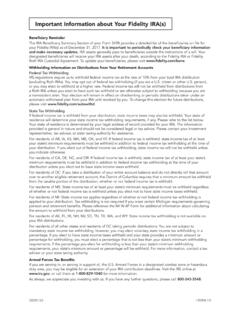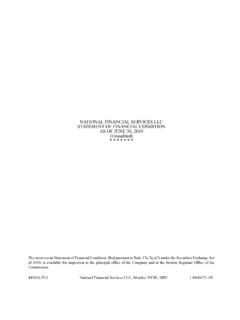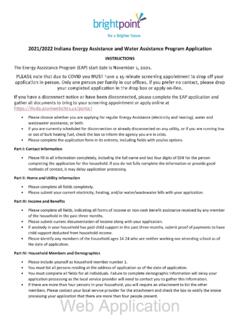Transcription of Understanding the Equity Summary Score Methodology
1 Understanding the Equity Summary Score Methodology Provided by StarMine from Refinitiv Understanding the Equity Summary Score Methodology The Equity Summary Score provides a consolidated view of the ratings from a number of independent research providers on Historically, the maximum number of providers has been between 10 and 12. However, some stocks are not rated by all research providers. Since the model uses a number of ratings to arrive at an Equity Summary Score , only stocks that have four or more firms rating them have an Equity Summary Score . It uses the providers' relative, historical, recommendation performance along with other factors to give you an aggregate, historical accuracy weighted indication of the independent research firms' stock sentiment.
2 As discussed in detail below, this single stock Score and associated sentiment is provided by StarMine from Refinitiv focused primarily on building quantitative factor models for institutional investors. It is calculated by normalizing third party research providers' ratings distributions (making them more comparable) and weighting each provider's rating in the final Score based on historical accuracy. Equity Summary Scores for the 1,500 largest stocks by market capitalization are force ranked to help ensure a consistent ratings distribution. This means that there will be a diversity of scores provided by the model, thereby assisting investors in evaluating the largest stocks (in terms of capitalization), which typically make up the majority of Fidelity's investors'.
3 Portfolios. Finally, smaller cap stocks are then slotted into this distribution without a force ranking, and may not exhibit the same balanced distribution. StarMine from Refinitiv updates Equity Summary Scores daily based on the ratings provided to it by the independent research providers after the close of each trading day. How are Equity Summary Scores calculated? The StarMine model takes the multiple standardized ratings of the research providers and creates a single Equity Summary Score /Sentiment using the following steps: 1. Normalize Look at the research providers' buy and sell ratings distributions to understand which ratings are scarce and therefore more important. The distribution of ratings from each of the independent research firms are normalized to make them more comparable with each other.
4 For example, some research providers may issue a large number of buy recommendations and few sell recommendations, or vice versa. StarMine adjusts for this by overweighting scarce ratings and underweighting plentiful . ratings. By normalizing the distribution of ratings, the model can recognize the "scarcity value" of ratings that are infrequently given which adds additional information to the model. 2. Weight Look at the 24 month relative firm/sector ratings accuracy and use that information to determine which firms' ratings have the most weight in the aggregated Equity Summary Score . For over five years on , StarMine has run its sophisticated scoring system to facilitate a fair comparison of research provider recommendation performance across widely disparate industries and market conditions.
5 The StarMine Relative Accuracy Score for each research provider uses the past performance of the provider's individual stock recommendations with that of its peers in each sector to calculate a statistical aggregation ranging from 1 to 100. It is calculated over a 24 month period based on the performance of a research firm within a given sector against its peer set of other firms in the market rating stocks in this sector. The calculation is analogous to a batting average Score , that is how often stocks rated buy outperform the market and stocks rated sell underperform the market as a whole. To get a Score higher than 50, the industry relative return of a firm's recommendations within a sector must, when taken together, be greater than those of the median provider.
6 The StarMine Relative Accuracy Score is used in the Equity Summary Score model to help weight the individual provider stock recommendations in the aggregated Equity Summary Score . 3. Calculate The normalized analysts' recommendations and the accuracy weightings are combined to create a single Score . For the largest 1,500 stocks by market capitalization, these scores are then forcibly ranked against all the other scores to create a standardized Equity Summary Score on a scale of to for the 1,500 stocks. This means that there will be a uniform distribution of scores provided by the model thereby assisting investors in evaluating the largest stocks (in terms of 1. Understanding the Equity Summary Score Methodology capitalization), which typically make up the majority of individual investors' portfolios.
7 Finally, smaller cap stocks are then slotted into this distribution without a force ranking, and may not exhibit the same balanced distribution. The Equity Summary Score and associated sentiment ratings by StarMine from Refinitiv are: to very bearish to bearish to neutral to bullish to very bullish Other Important Model Factors: An Equity Summary Score is only provided for stocks with ratings from four or more independent research providers. New research providers are ramped in slowly by StarMine to avoid rapid fluctuations in Equity Summary Scores. Independent research providers that are removed from will similarly be ramped out slowly to avoid rapid fluctuations. Notes on Using the Equity Summary Score : The Equity Summary Score and sentiment ratings are ratings of relative, not absolute forecasted performance.
8 The StarMine model anticipates that the highest rated stocks, those labeled Very Bullish as a group, may outperform lower rated groups of stocks. In a rising market, most stocks may experience price increases, and in a declining market, most stocks may experience price declines. Proper diversification within a portfolio is critical to the effective use of the Equity Summary Score . Individual company performance is subject to a broad range of factors that cannot be adequately captured in any rating system. Larger differences in Equity Summary Scores may lead to differences in future performance. The sentiment rating labels should only be used for quick categorization. An Bullish is closer to a Very Bullish than a Bullish. For a customer holding a stock with a lower Equity Summary Score , there are many important considerations (for example, taxes) that may be much more important than the Score .
9 The Equity Summary Score does not predict future performance of underlying stocks. The Equity Summary Score model has only been in production since August 2009 and therefore no assumptions should be made about how the model will perform in differing market conditions. 2. Understanding the Equity Summary Score Methodology How has the Equity Summary Score performed? Transparency is a core value at Fidelity, and that is why StarMine from Refinitiv provides Fidelity with a view of the historical aggregate performance of the Equity Summary Score across all covered stocks each month. You can use this to obtain insight into the performance and composition of the Equity Summary Score . In addition, the individual stock price performance during each period of the Equity Summary Score sentiment can be viewed on the symbol.
10 Specific Analyst Opinions History and Performance pages. 1. Equity Summary Scorecard Summary A Total Return by Sentiment chart shows how a theoretical portfolio of stocks in each of the five sentiments performed within the selected time period. For example, the bright green bar represents the performance of all the Very Bullish stocks. Provided for comparison is the performance of First Call Consensus Recommendation of Strong Buy, the average of all stocks with an Equity Summary Score , and the S&P 500 Total Return Index. 2. Performance by Sector and Market Cap Fidelity customers have access to more in depth analysis of the Equity Summary Score universe and performance. The Total Return by Sector chart provides the historical performance of a theoretical portfolio of Very Bullish stocks in each sector over the time period selected.
